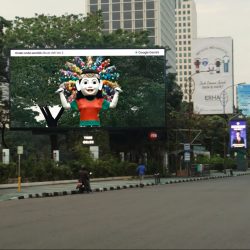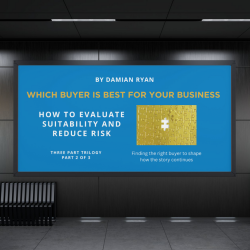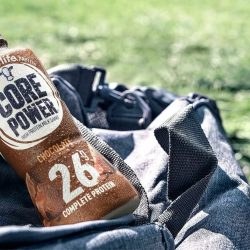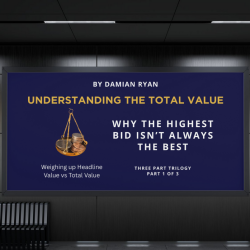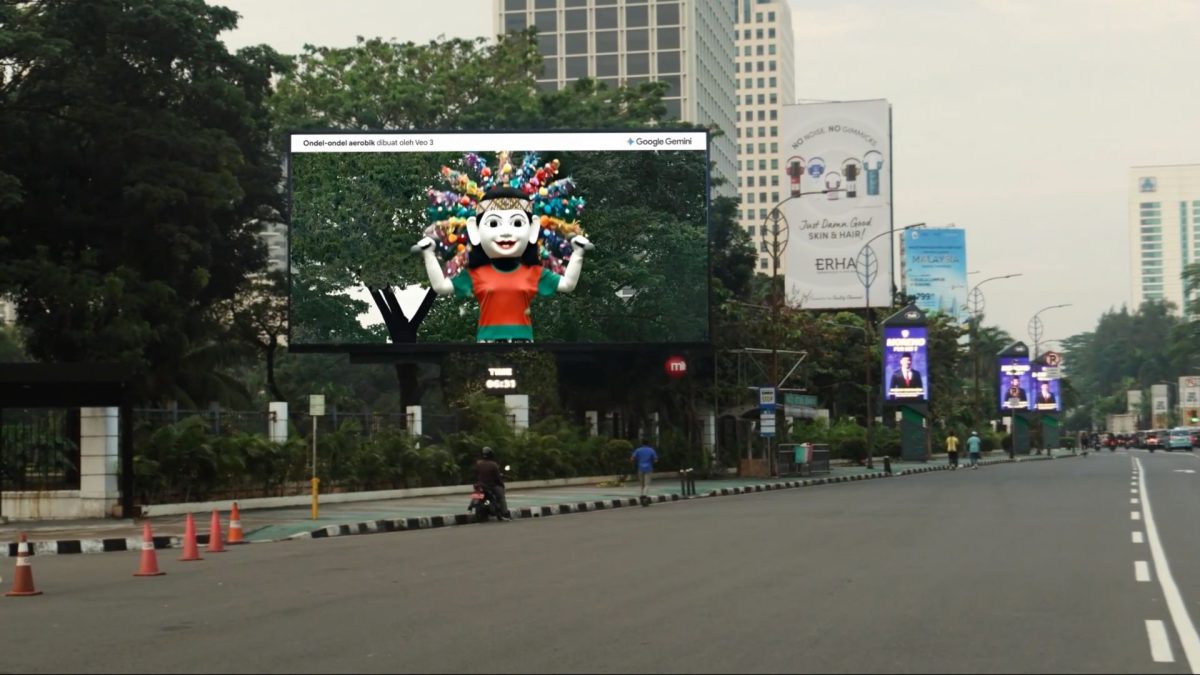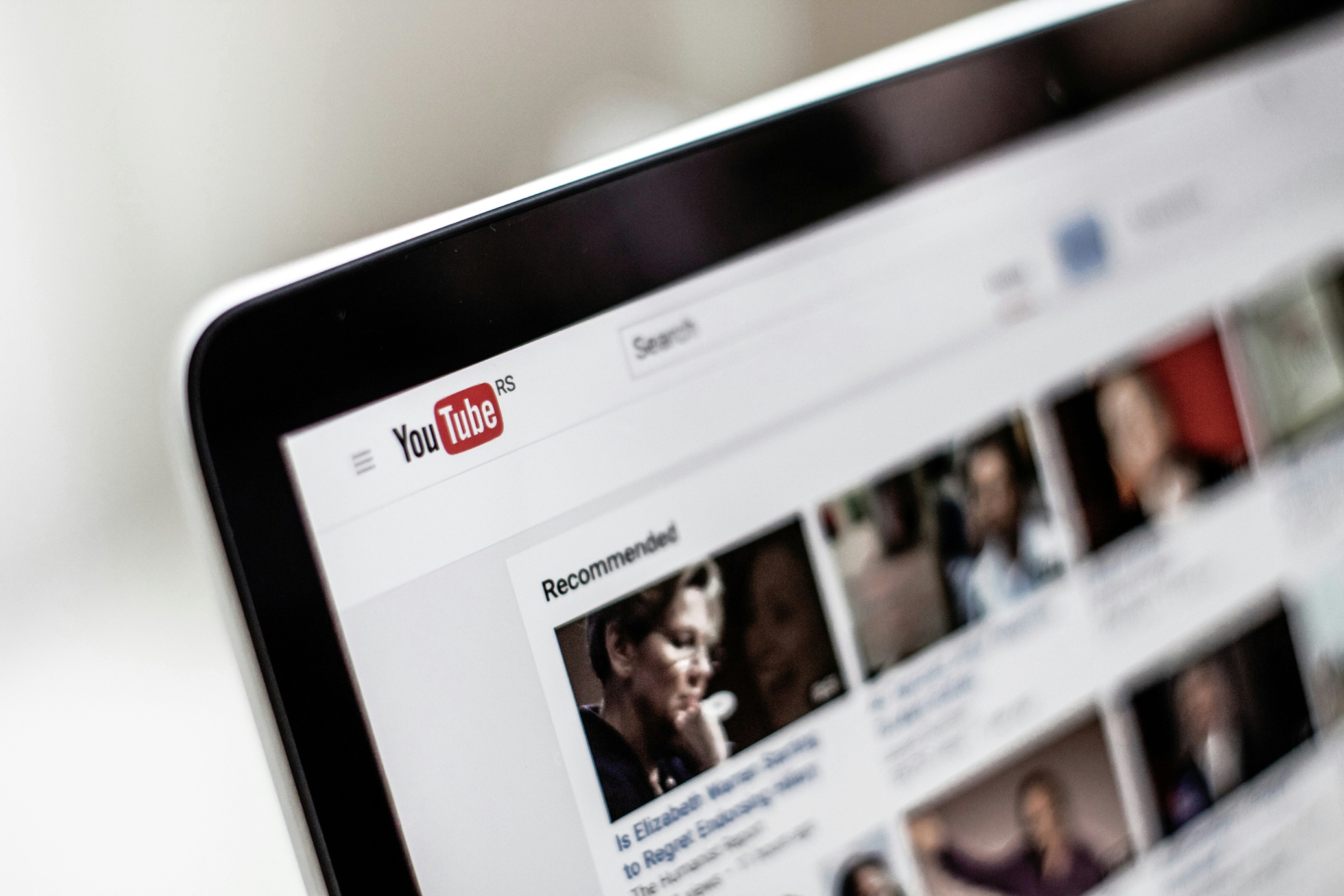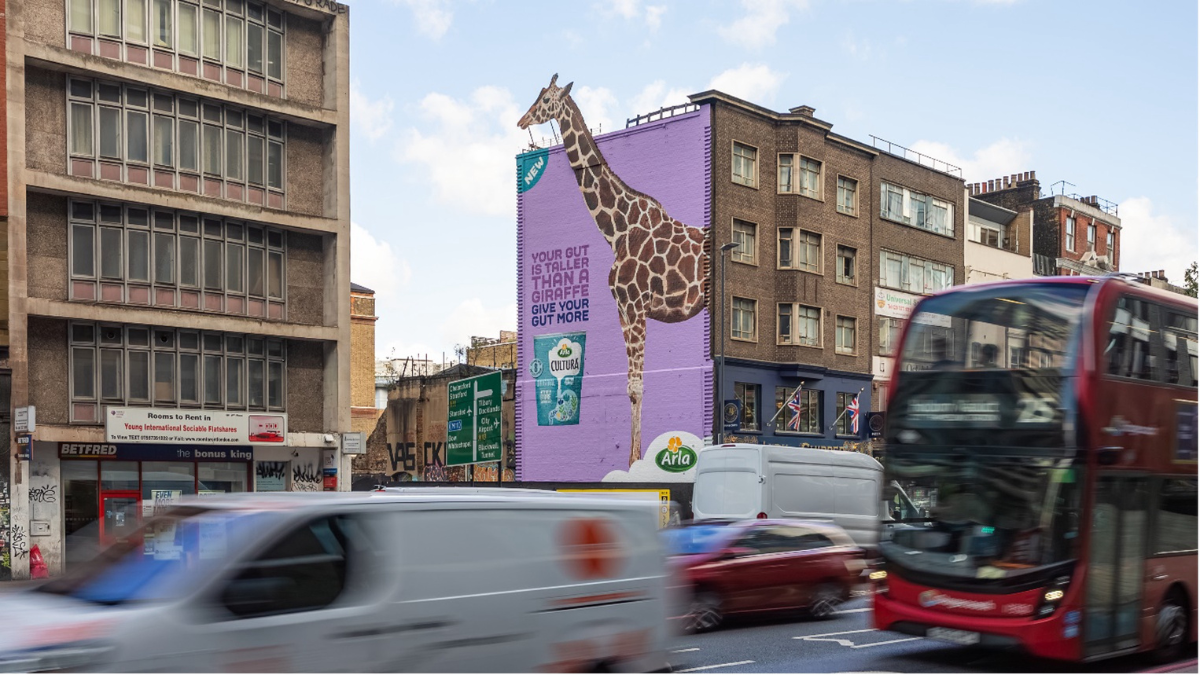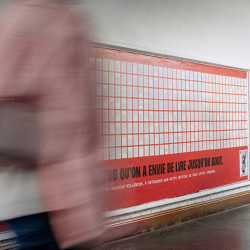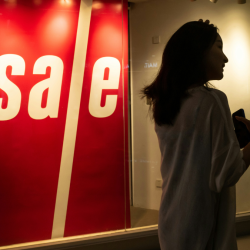Google in Singapore is using augmented reality to create transparent-looking billboards, to promote its AI tool.
The billboards in Jakarta, Surabaya and Bandung are part of the #BikinGebrakanLo collaboration between DDB Singapore, Google Indonesia, Superson, and Hagia Labs to promote Google Gemini.
The campaign uses AI to create realistic images which mimic the billboard’s surroundings, to make it seem see-through, and then add in animated elements. The technology automatically scans real-time weather reports and selects matching imagery, to keep the illusion accurate to its surroundings all the time.
Each billboard also features a QR code, which can be scanned by anyone who wants to create and submit VEO3 content to be featured.
The initial set of animations include waves of bubble tea flowing between buildings, dinosaurs wandering the streets of Singapore, interdimensional portals hanging in the air and an Ondel-Ondel puppet [a traditional Indonesian folk character] doing aerobics in Senayan park.
It’s not the first time that ads have been designed to be integrated in this way—a 3D billboard for the Final Fantasy VII game in Tokyo blended its edges with the concrete buildings around it, to make the featured characters look more realistic.
However, the #BikinGebrakanLo billboards use AI to make these integrated images strikingly realistic, mimicking realistic movement and depth to give them their see-through appearance. Superson’s managing director Antti Toivonen called it an ‘entirely new format’ which ‘would not have been possible without Google’s latest technologies’.
While the creative output is impressive, Hagia Labs founder Sedat Boynuegri acknowledged that the ‘bigger win’ in using AI for this campaign was ‘the workflow’. There are around 40 different 15-second assets, which were created in a matter of weeks thanks to Google’s Veo 3 and Nano Banana AI technology. New assets can be created and added to the available presets in 24 hours, making it possible to react quickly to news events or online trends.
